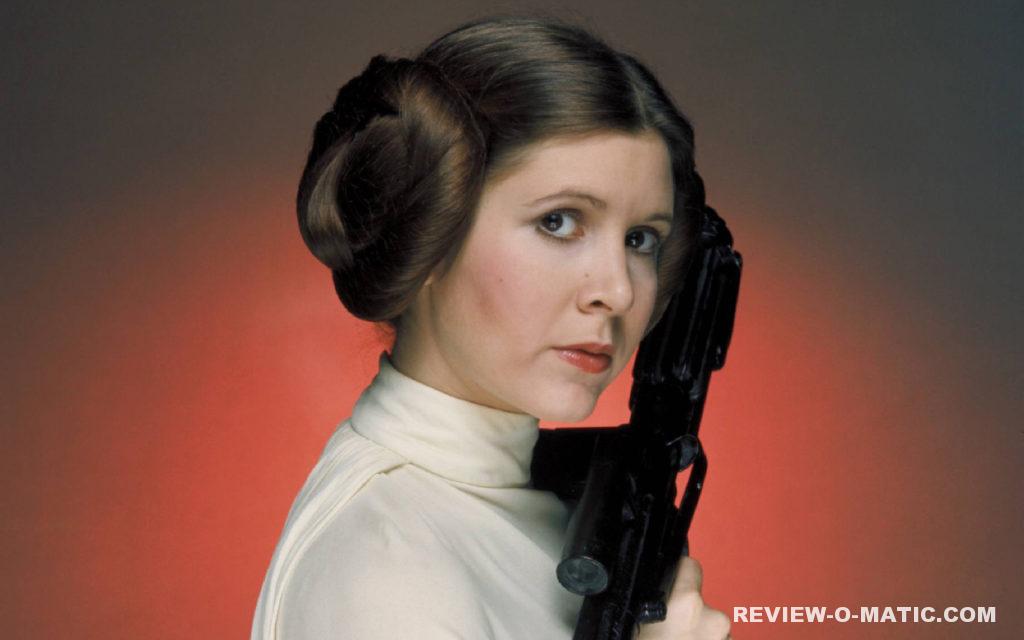The Princess Diarist by Carrie Fisher (2016)

Multiple times in The Princess Diarist, Carrie Fisher writes that more than anything, she wanted — no, needed — to be loved. As the daughter of Debbie Reynolds, Fisher was thrust into the public eye before she could walk or talk. As a young teen, she dropped out of high school to perform in her mother’s traveling cabaret act. When she enrolled in acting school, it was only because as a high school dropout, she didn’t know what else she could become. What she became, of course, was Princess Leia.
The relationship between an aging Fisher and the beautiful and bold interstellar princess she portrayed is just one of the contradictions examined in Fisher’s last work. Weeks before arriving on the set of Star Wars, a 5’6″, 110-pound Fisher was sent to “fat camp” to lose ten pounds before filming was scheduled to begin. Later in the book, Fisher discusses her life as a “celebrity lap dancer,” her term for a person who signs autographs for money. She writes at length about overzealous fans, all of whom confess Princess Leia was their first crush.
The middle (and largest) section of the book is dedicated to Fisher’s long-rumored affair with Harrison Ford, fifteen years her senior at the time. He had a wife and two kids back at home; she was nineteen, and had only previously dated one boy. If you’re looking for sordid details, you won’t find them in this book. Fisher comes clean about the logistical arrangements, but the details have (perhaps conveniently) been forgotten.
After referencing the diaries she kept during this three month period, she shares them, and this is what lost me. Half of this book consists of journal entries and poetry written by a then nineteen-year-old Fisher, as she falls in love with her co-star and, over time, realizes that the relationship is, at best, one of convenience. The entries are like reading moody and vague Facebook entries from a young girl trying to appear more worldly and wise than she was.
Post-diary entries, Fisher returns to reflecting on her life as an adult — on signing 8x10s for money and whatever else it takes to keep up her shopping habits (or, in other times, keep the lights on). In one particularly heartbreaking story, Fisher recalls a young child who, having just met Fisher at a convention, broke into tears and begged to see “the other, younger Princess Leia.” Considering that this (and each of Fisher’s memoirs) have included pictures of herself from 1977 on the front cover, it’s safe to say Fisher wouldn’t have minded seeing that other princess, too.
Fans of Star Wars will be disappointed in the lack of information related to the film here. (Other than a bit about her interview process and a day with her hairdresser, she writes almost nothing about the trilogy.) Most of the good stories were shared in Fisher’s two previous memoirs, Wishful Drinking and Shockaholic (not to mention the almost-autobiographical Postcards from the Edge.) With little else left to share it seems Fisher dug out the one remaining story she had been keeping to herself (her affair with Ford), and even that isn’t particularly detailed. In a book that details how she came to cope with “selling herself out,” it’s hard not to see this book as an extension of that.
Sadly, Carrie Fisher passed away five weeks after the publication of The Princess Diarist. With nothing left to share, maybe there was simply nothing left. Rest in peace, Princess Leia and Carrie Fisher.